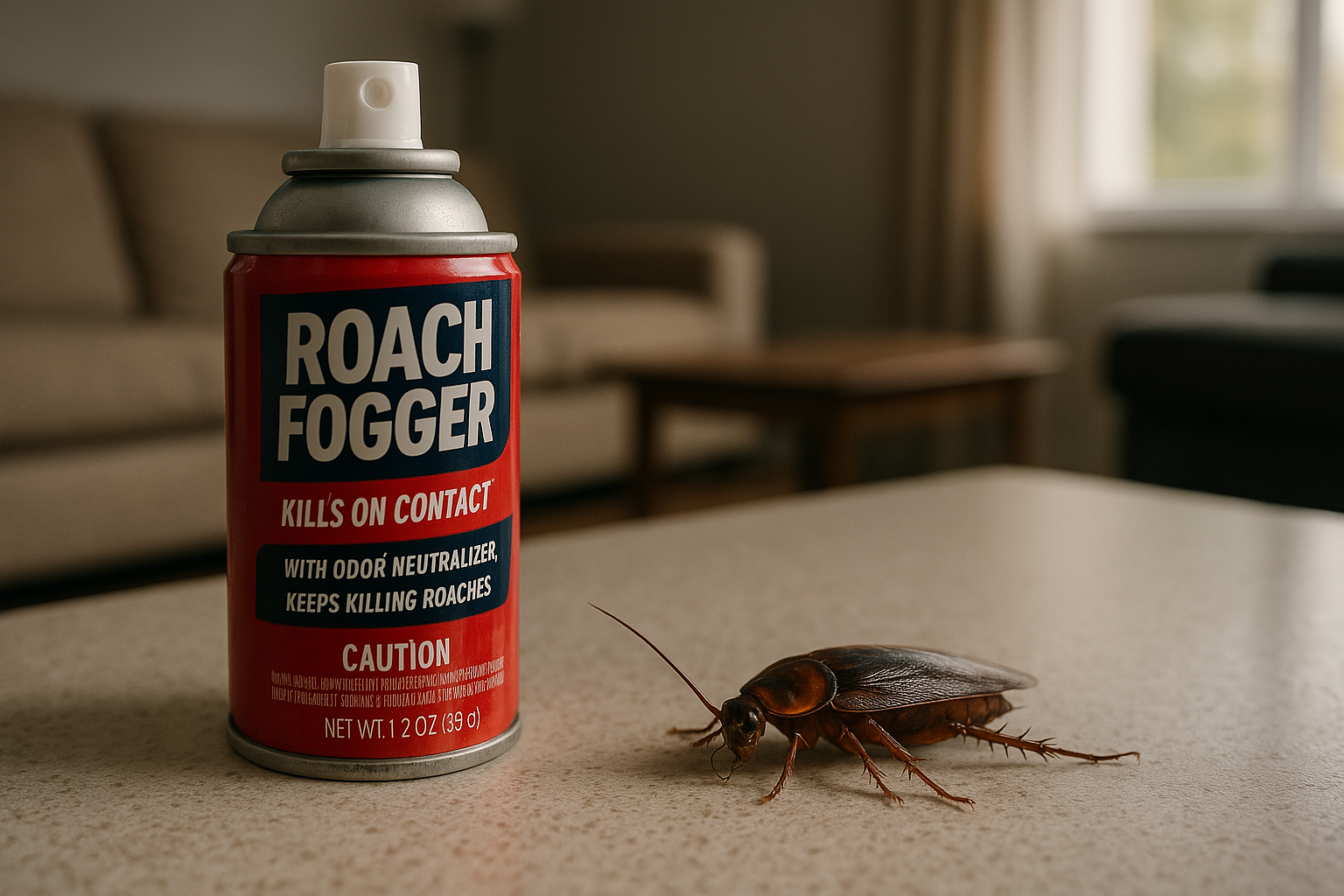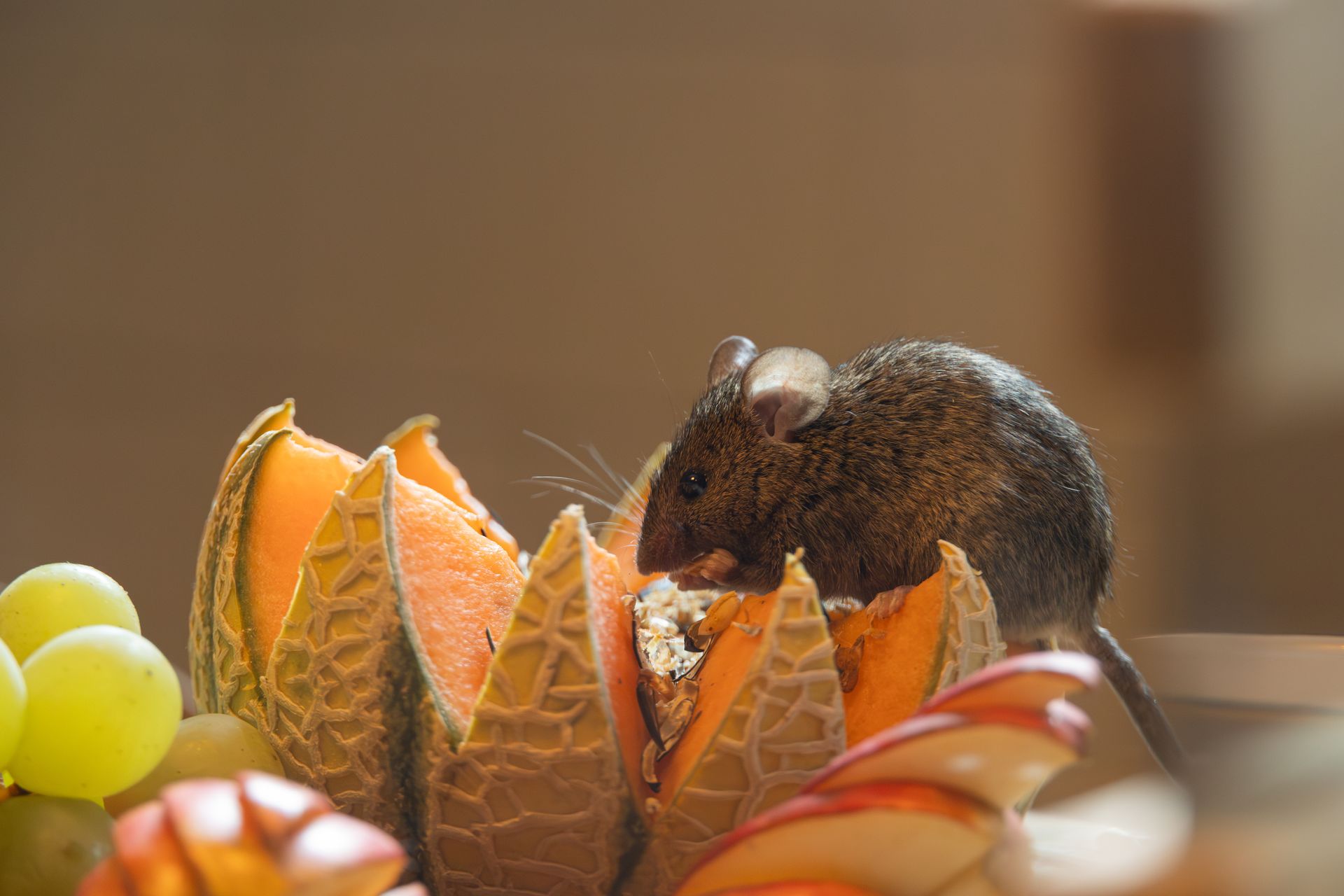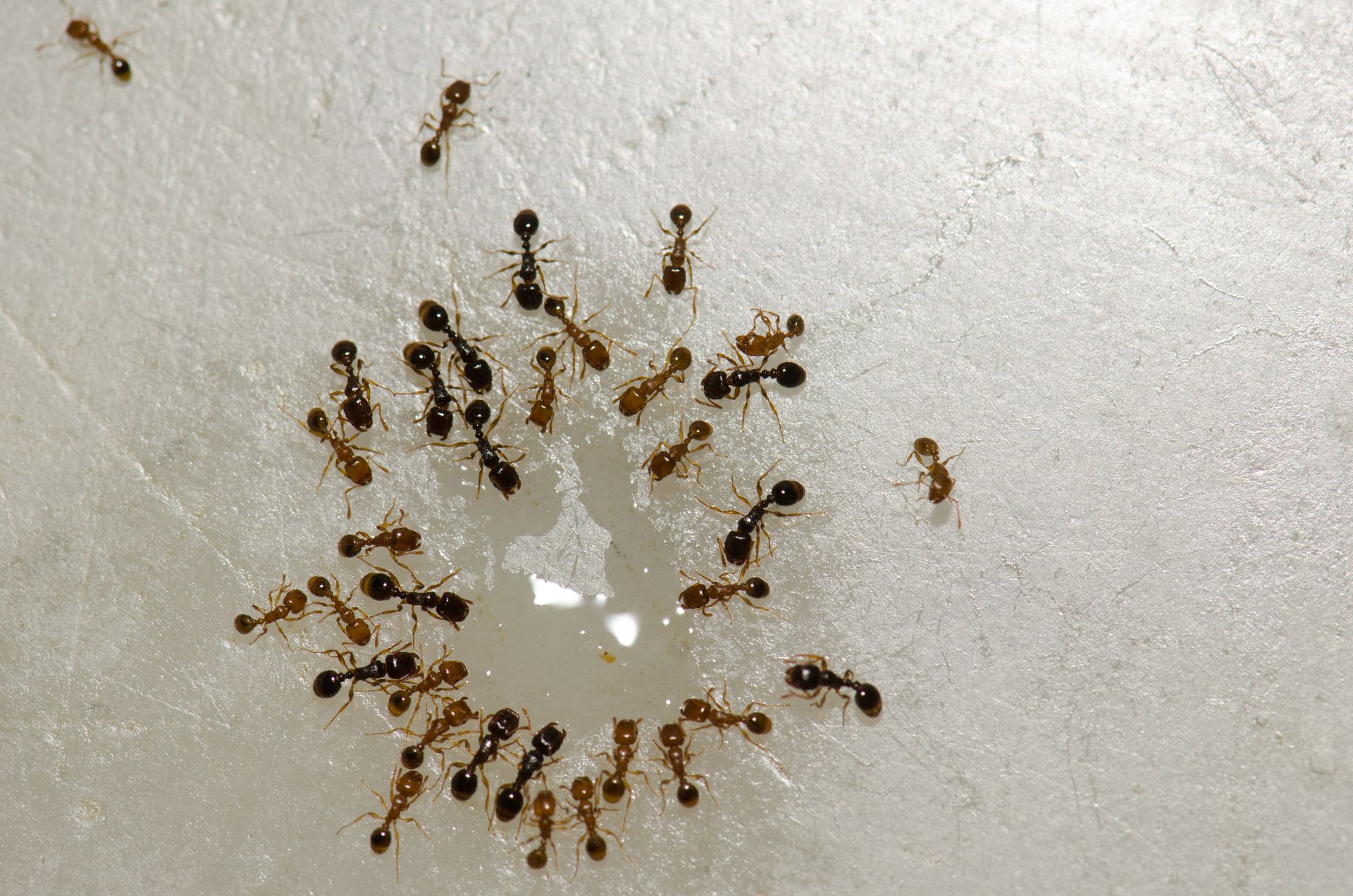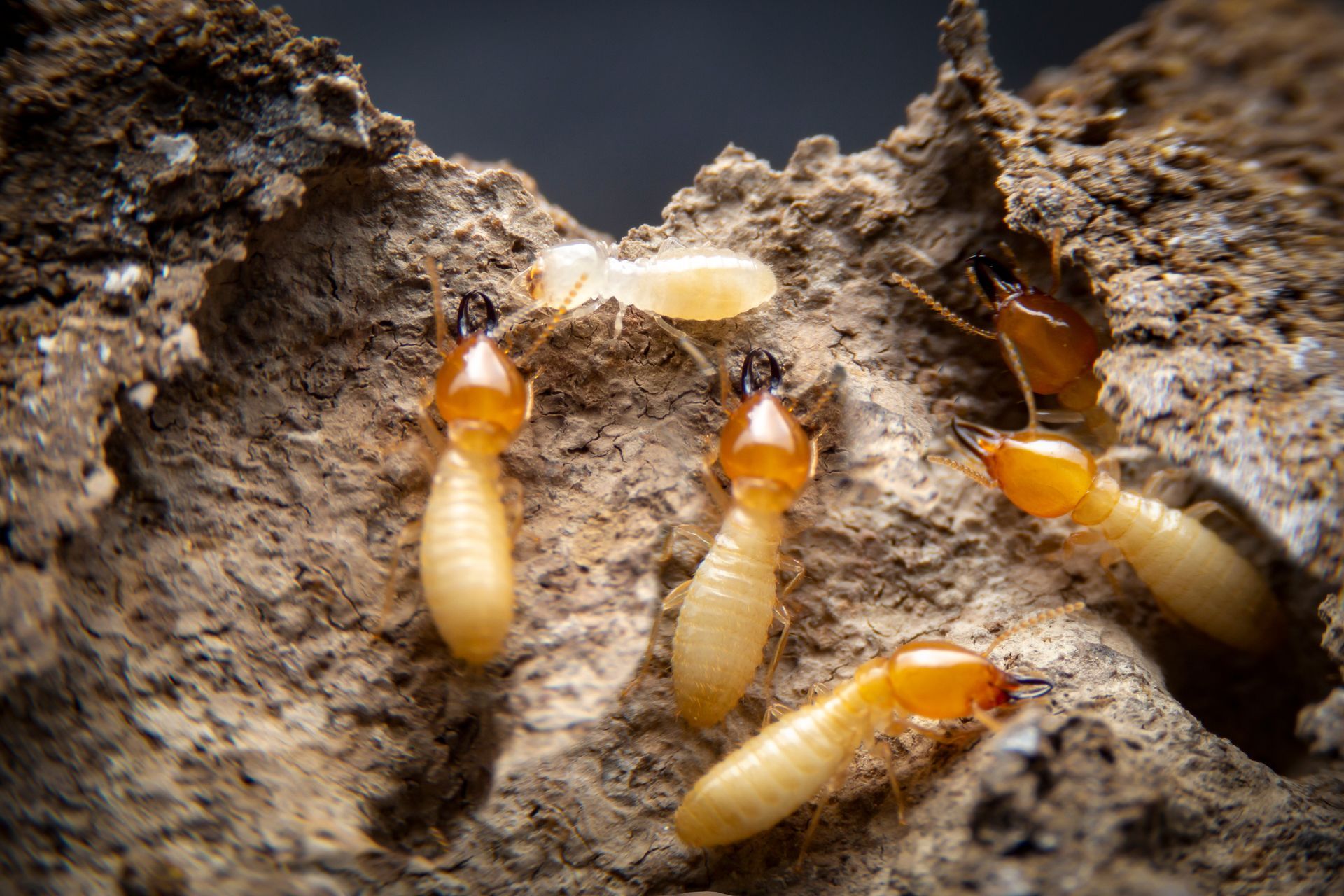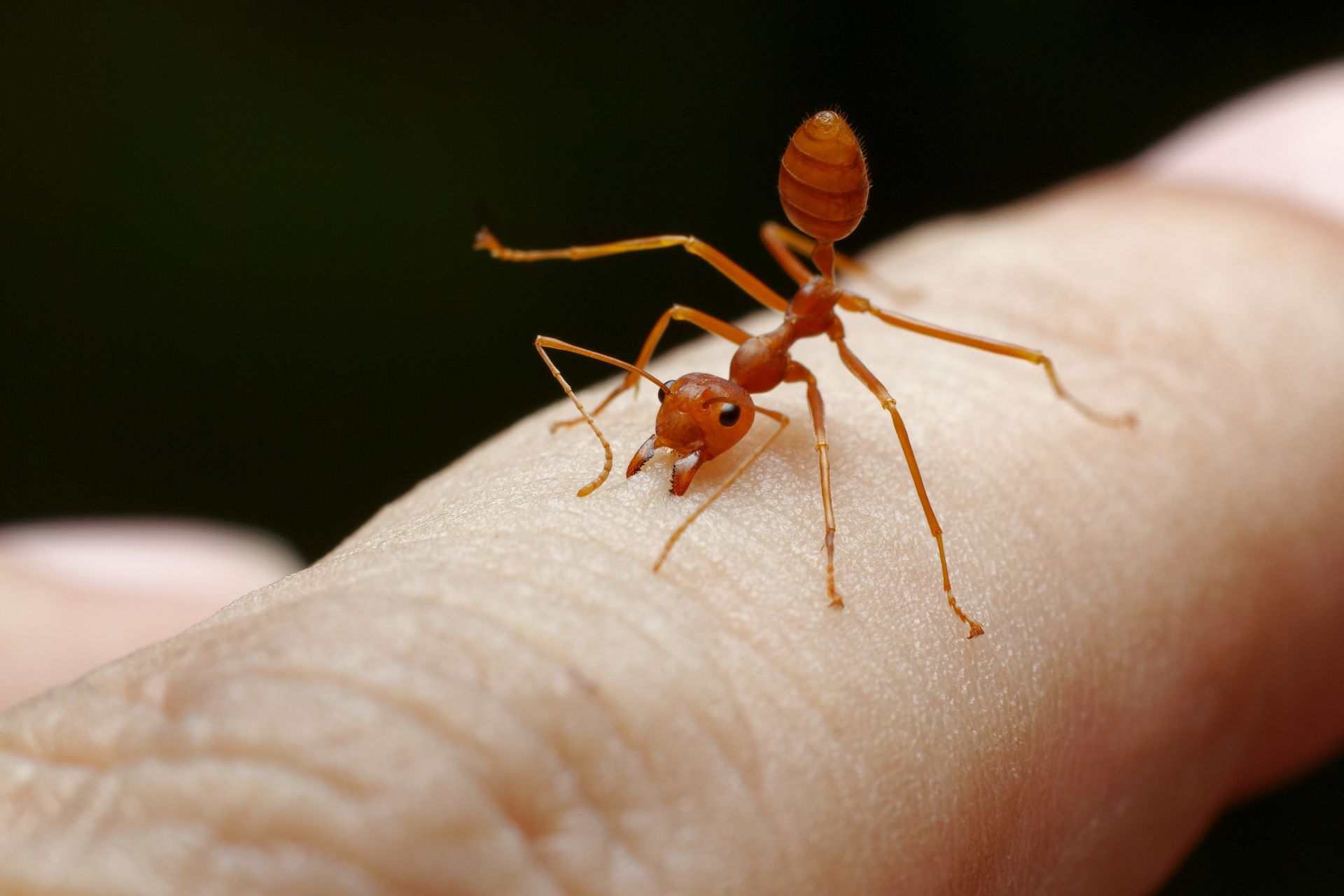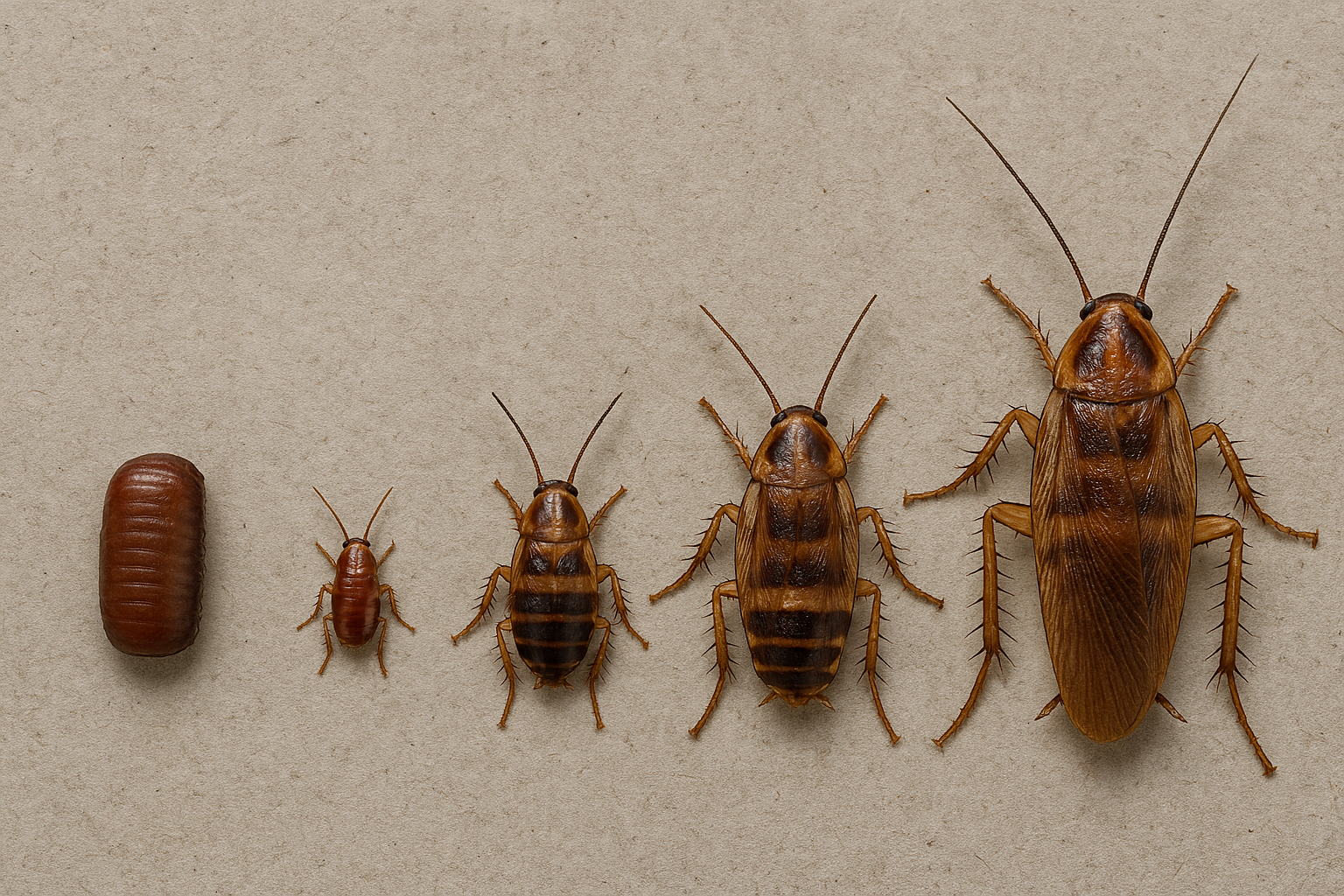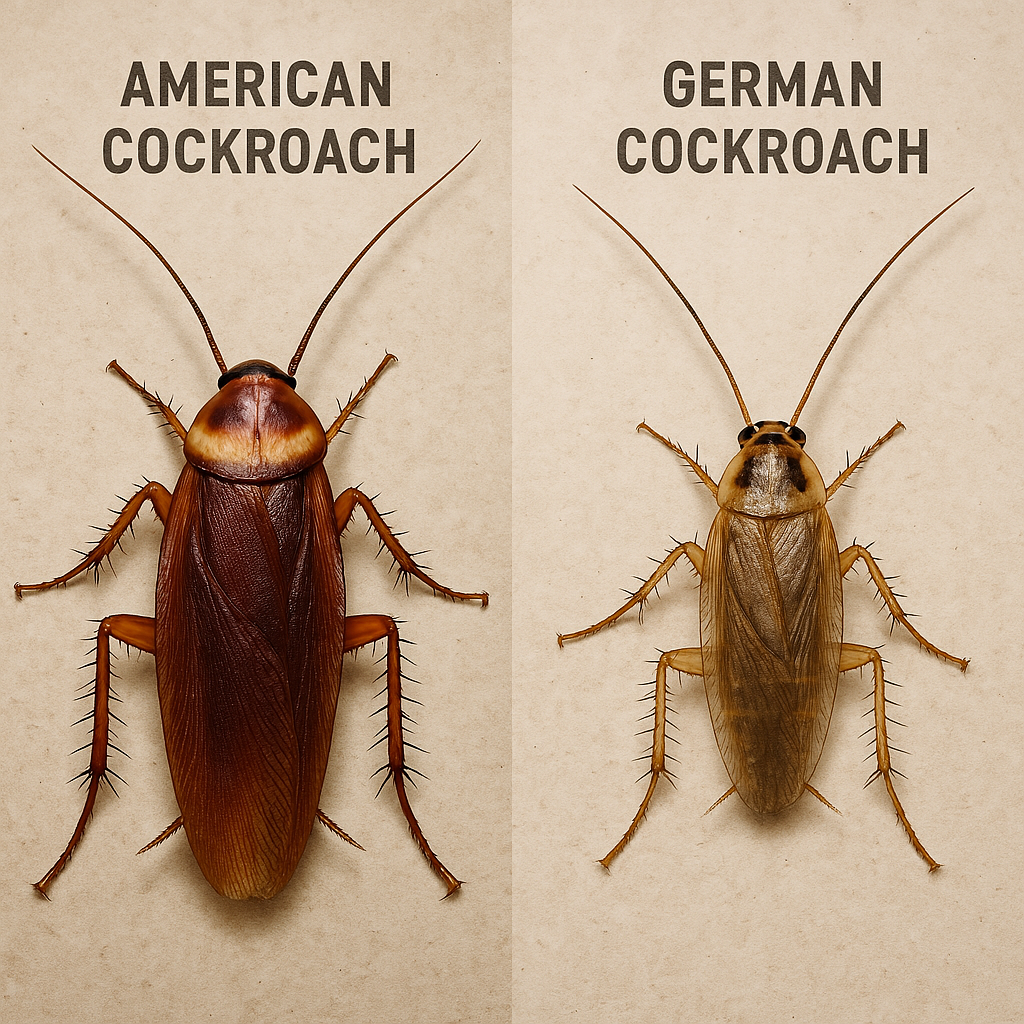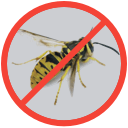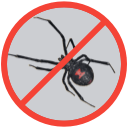How Many Ants are in a Colony?
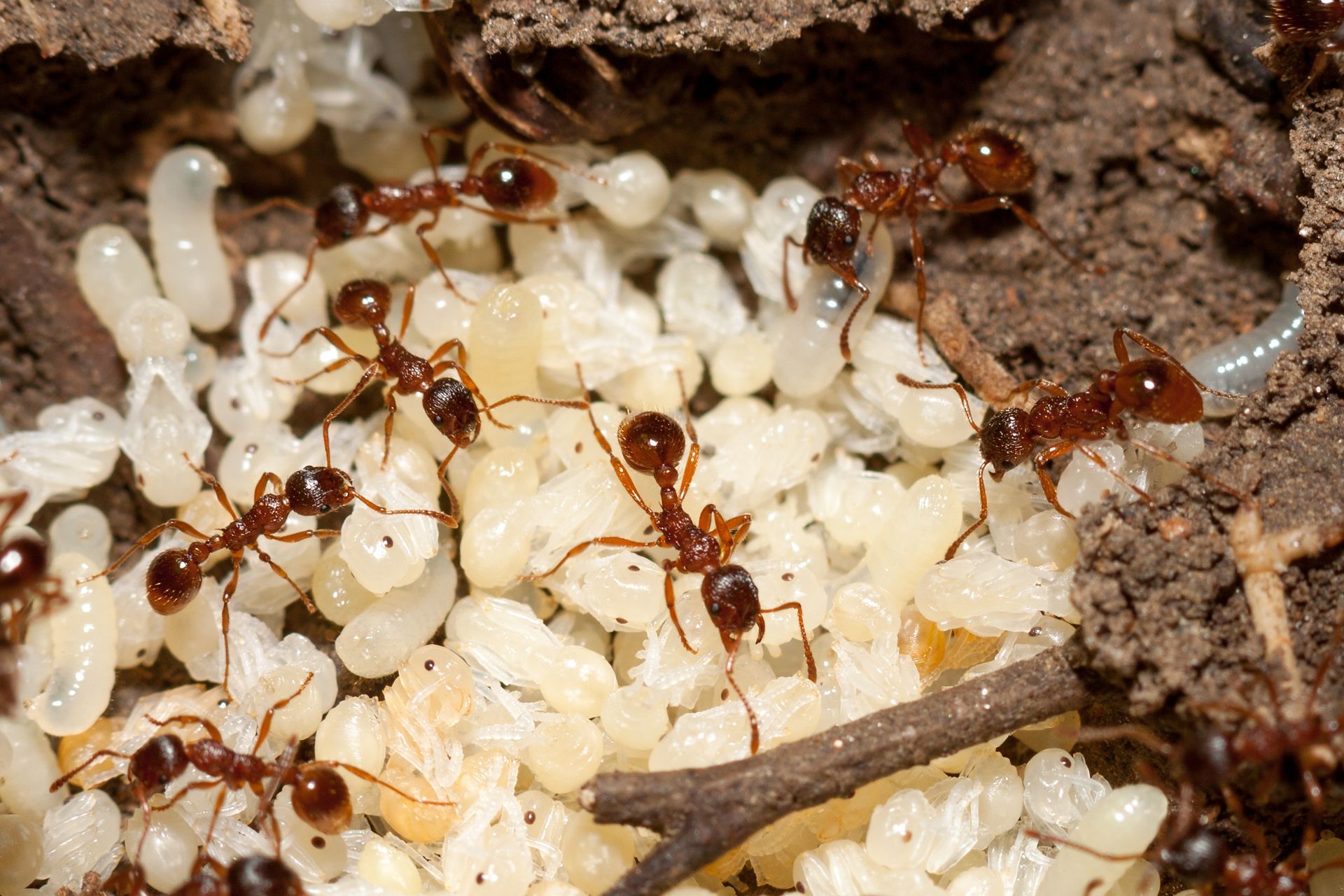
The number of ants in a colony varies dramatically by species, with small colonies containing just a few dozen ants while the largest super colonies can house billions. The population of ant colonies reaches between 20,000 to 100,000 ants on average, with the upper limit on super colonies reaching several billions of ants. However, this range simplifies the complex reality of ant colony sizes, which are influenced by species, age, environment, and numerous other factors.
When you spot a few ants traversing your kitchen counter, you're witnessing just the tip of the iceberg. Behind those scout ants lies a complex social structure that can number in the thousands to even millions. Understanding ant colony size isn't just fascinating from a biological perspective, it's crucial knowledge for effective pest management. Learning about ant colonies help shed light on how incredible these collective organisms and their colony structures are.
How Many Ants Can Live in One Colony?
The number of ants in a colony varies dramatically depending on several factors and environmental conditions. While some colonies consist of just a few dozen individuals, others can grow to astonishing proportions. The average ant colony typically contains between 20,000 to 100,000 individual ants. Colonies begin small with just a queen and her first brood of workers but can rapidly expand to reach impressive numbers as they mature.
What's particularly important to understand is that those few ants you see in your home are often just foragers from a much larger colony. Reports indicate that foraging ants typically represent only 2-10% of a colony's total population, meaning that for every ant you see, there may be dozens to hundreds that are left unseen.
Ant Species That Have Large Colonies
Some ant species are known for their particularly massive colonies:
- Argentine Ant (Linepithema humile) colonies are known as some of the largest with a super colony spanning several continents holding the record for largest colony in the world. Originally from South America, this super colony spans the Mediterranean coast for over 3,700 miles and is estimated to contain billions of ants across millions of different satellite colonies. What makes these ants remarkable is their ability to recognize and cooperate with Argentine ants from different colonies, forming mega structures that function as a single unit.
- Leafcutter Ants (Atta species) build enormous underground colonies that can house up to 8 million individuals. Their complex nests can extend 30 feet deep and feature hundreds of interconnected chambers.
- Fire Ants (Solenopsis invicta), particularly the red imported fire ant, typically maintain colonies of 100,000 to 500,000 individuals. These nests are known to be 2 feet wide and reach up to 18 inches below the soil surface.
- Pharaoh Ants (Monomorium pharaonis) are common household pests whose colonies can contain up to several hundred thousands of workers and soldier ants with multiple queens in the colony hierarchy. Their colonies frequently "bud" or split, creating satellite colonies that make them particularly difficult to control.
Ant Species That Have Small Colonies
Not all ant species variations form massive colonies. Several maintain relatively modest populations:
- Carpenter Ants (Camponotus species) typically have colonies ranging from several hundred to a few thousand individuals. Despite their smaller population size, they can cause significant structural damage to wooden buildings as they excavate galleries for their nests.
- Acorn Ants (Temnothorax species) have some of the smallest colonies, often consisting of just 100-200 individuals. These tiny ants can make their homes inside acorns with the entire colony fitting into the small cavity inside [5].
- Field Ants (Formica species) typically maintain colonies of 3,000-5,000 workers. These ants are common in lawns and fields, where they construct small mounds that can sometimes damage turf.
What Affects an Ant Colony's Population?
Several key factors influence how large an ant colony can grow:
Biological Factors
- Queen fertility: The egg laying capacity of the queen(s) directly impacts potential colony size with some queens being able to lay thousands of eggs daily for several years.
- Worker lifespan: The longevity of worker ants affects how quickly the colony can accumulate members. Depending on the species, workers may live from a few months to several years.
- Colony age: Young colonies are naturally smaller than mature ones. Most colonies need several years to reach their maximum potential size.
- Genetic factors: Some ant species are genetically programmed to form larger colonies than others, reflecting different evolutionary strategies.
- Number of queens: Multiple queen (polygyne) colonies can grow larger and faster than single queen (monogyne) colonies due to increased egg production.
Timing Factors
Ant colony populations aren't static entities as seasonal behavior adapts to environmental changes:
- Spring Expansion: As temperatures warm, overwintered colonies accelerate egg production and worker activity. This period coincides with increased foraging behavior as colonies collect resources to support this growth.
- Summer Peak: Most ant species reach their maximum colony size during summer months when food resources and favorable temperatures support peak activity and reproduction.
- Fall Contraction: As temperatures cool and food becomes scarcer, many species reduce egg production, and worker mortality begins to outpace replacement. Some species begin to consolidate their nests and reduce territory size.
- Winter Adaptation: Worker populations often decline through winter due to natural mortality without replacement, as queens typically reduce or cease egg laying until spring.
What Are the Stages of Ant Colony Growth?
Ant colonies develop through distinct phases that are each characterized by different population dynamics:
Founding Stage
The journey begins with a newly mated queen who, after her nuptial flight, sheds her wings and seeks a suitable location to establish her colony. During this solitary phase, she lays her first batch of eggs and nurtures the developing larvae entirely on her own, using stored body fat and the breakdown of her now useless wing muscles for energy.
These first offspring, known as nanitics, are typically smaller than later generations due to the limited resources available. Once these initial workers mature, they immediately begin foraging, maintaining the nest, and caring for subsequent broods, while the queen transitions to focusing exclusively on egg production. This colony founding stage is exceptionally vulnerable, with an estimated 90-95% of new queens failing to establish successful colonies.
Growth Stage
With the first workers taking over colony maintenance tasks, the growth phase begins. The queen dedicates her energy to laying eggs, while workers forage for food, expand the nest, and care for developing young. According to research by Dr. Walter Tschinkel of Florida State University, colony growth typically follows a sigmoid curve which is represented by a slow initial growth followed by a period of rapid expansion before leveling off as the colony approaches maturity.
During this phase, the worker population increases exponentially, and the colony begins to develop more complex social structures. Workers may start to differentiate into specialized roles based on age or physical characteristics. The growth stage can last anywhere from 1-5 years, depending on the species and environmental conditions.
Reproductive Stage
Once the colony reaches a certain threshold, typically tens of thousands of individuals for many species, it enters the reproductive stage where the colony begins to produce reproductive individuals (alates). These alates are winged males and females that will leave the nest to mate and potentially form new colonies.
This investment in reproductives represents a significant energy expenditure for the colony and usually occurs when the colony has sufficient resources to support both its current population and the production of these specialized individuals. The number of reproductives produced can range from dozens to thousands, depending on colony size and resource availability.
Mature Stage
A mature colony has reached a relatively stable size where the rate of worker production roughly equals the mortality rate. At this stage, the colony's energy is divided between maintenance, growth, and reproduction. Many mature colonies produce reproductive alates annually which contribute to the species' spread.
For some species, colony maturity comes with territorial expansion through satellite colonies. These offshoots remain connected to the main colony, creating a polydomous structure that can occupy a larger territory and access more resources than a single nest could.
Benefits of Large Ant Colonies on Ant Populations
The evolution of large colony sizes offers several adaptive advantages for ants:
- Division of Labor and Specialization: Larger colonies support greater task specialization among workers which leads to increased efficiency. Studies have shown that larger colonies show more complex division of labor, with worker ants specializing in specific tasks rather than performing multiple functions. This specialization allows the colony to simultaneously address various needs, from foraging to defense to brood care.
- Improved Defense Mechanisms: Size provides security. Larger colonies can mount more effective defenses against predators and competing ant species. Research has found that colonies with more workers could detect and respond to threats more quickly, reducing overall mortality rates.
- Enhanced Resource Acquisition: More foragers mean more food. Food acquisition actually increases with colony size due to improved communication networks and the ability to quickly mobilize workers to profitable food sources.
- Microclimatic Regulation: Larger nests allow for better control of internal nest temperature and humidity. For species that build mounds, such as fire ants, a bigger workforce can construct more sophisticated structures that better regulate internal conditions, protecting the brood and queen from environmental extremes.
- Increased Genetic Diversity: In polygyne colonies (those with multiple queens), larger size is associated with greater genetic diversity, which can provide resilience against diseases and environmental changes. Research published in Evolution demonstrated that increased genetic diversity correlates with improved colony immune function and resistance to pathogens.
How Do Ant Colonies Grow?
Ant colonies expand their numbers through several mechanisms:
Natural Reproduction: The primary method of colony growth is through the continuous production of new workers by the queen(s). A healthy queen can lay hundreds or even thousands of eggs per day, depending on the species. These eggs develop into larvae, then pupae, before emerging as adult workers. The reproductive capacity of ant queens is astounding with some queens surviving and laying for over 15 years during which she can produce millions of offspring during their lifetime.
Nest Budding: Some species, particularly those that form polygyne colonies, expand through a process called budding. In this method, one or more queens, accompanied by a group of workers, leave the original nest structure to establish a satellite colony nearby. These daughter colonies may maintain connections with the original nest to create a network of related nests that function as a single extended colony. Pharaoh ants and Argentine ants are particularly known for this behavior, which makes them especially challenging to control as pests.
Colony Fusion: In some species, separate colonies may merge if they recognize each other as non-threatening. This behavior is most notable in invasive species like Argentine ants, where colonies with similar genetic or chemical profiles can combine forces rather than compete, leading to enormous cooperative networks.
Colony Adoption: After the death of a colony's queen, some ant species may accept a new queen from another colony. This queen adoption prevents the colony's extinction and allows for continued growth under new reproductive leadership.
How Big Can Ant Colonies Get?
Ant colony size limits can be astounding for certain species. The largest known ant colony structure isn't a single nest but rather a network of interconnected colonies that function as one super colony.
The most notable example is the Argentine ant super colony that stretches along the Mediterranean coast of Europe. According to research published by Tatiana Giraud, this super colony contains billions of workers and millions of queens spread across thousands of individual nests spanning 3,700 miles.
In Japan, another massive colony of the Japanese red wood ant species was discovered on the Ishikari coast of Hokkaido, containing an estimated 306 million worker ants and one million queens living in 45,000 interconnected nests over an area of approximately 670 acres.
What are Ant Super Colonies?
Super colonies represent one of the most fascinating phenomena in ant ecology. Unlike typical ant colonies that maintain distinct territorial boundaries and show aggression toward neighboring colonies, ants in a super colony recognize each other as nestmates across vast distances. This recognition is based on similar chemical profiles on their cuticles (outer surfaces), which serve as identification signals.
What makes super colonies particularly successful as invasive species is their ability to direct resources toward colony growth rather than territorial defense against neighboring colonies of the same species. This cooperative strategy gives invasive ants a significant advantage over native species, which typically maintain smaller, territorial colonies that compete with each other.
What is the Biggest Ant Colony?
The title of "world's largest ant colony" belongs to the Argentine ant (Linepithema humile) mega colony that spans several continents. Genetic studies have revealed that the large Argentine ant colonies in Europe, North America, and Asia are actually part of a single global "mega colony," representing what may be the most widespread animal society on Earth. The scientists behind this discovery described it as "the largest cooperative unit ever recorded," representing a level of social cohesion previously unknown in the animal kingdom outside of human society. What makes this mega colony remarkable is not just its physical size but the fact that ants from nests separated by thousands of miles recognize each other as nestmates rather than competitors. When researchers collected ants from distant parts of this range and placed them together, they showed no aggression which is behavior that would be unthinkable between normal, separate colonies.
How Many Queens Can an Ant Colony Have?
The number of queens in an ant colony varies significantly by species and can influence colony structure and growth patterns:
Monogyne Colonies: Most ant species form monogyne colonies with a single queen. This structure is common in species like carpenter ants (Camponotus spp.), field ants (Formica spp.), and harvester ants (Pogonomyrmex spp.). In these colonies, the single queen serves as the sole reproductive individual, laying all the eggs that will develop into workers, males, and future queens.
The presence of just one queen helps maintain genetic cohesion within the colony and often corresponds with strong territorial behavior toward other colonies, even of the same species. The lifespan of this queen is critical to colony survival because when she dies, the colony typically declines and eventually perishes unless it can adopt a new queen (a rare occurrence in most species).
Polygyne Colonies: Other species maintain polygyne colonies with multiple reproductive queens. These include invasive pests like Argentine ants (Linepithema humile), pharaoh ants (Monomorium pharaonis), and some fire ant (Solenopsis invicta) populations. The number of queens can range from just a few to hundreds or even thousands across a connected network of nests.
Research notes that polygyne colonies can grow larger and expand more rapidly than monogyne colonies due to their increased reproductive capacity. Multiple queens also provide insurance against colony collapse if one queen dies, contributing to these species' success as invasive pests. Queens may also compete for reproductive dominance, or they may cooperate and contribute relatively equally to egg production. In some cases, worker ants may regulate queen numbers by eliminating excess or less productive queens.
What Affects How Many Queens An Ant Super Colony Can Have?
Several factors influence queen numbers in super colonies:
- Genetic Factors: The genetic predisposition toward polygyny (multiple queens) is a fundamental determinant. Research by Ross and Keller (1998) identified specific genetic markers associated with queen acceptance behaviors in fire ants. In some species, a single genetic element can determine whether a colony accepts multiple queens or eliminates all but one.
- Environmental Conditions: Ecological factors influence the optimal number of queens. Unpredictable or harsh environments may favor polygyne structures as insurance against queen mortality due to polygyne colonies being able to recover more quickly from disturbances and survive in rough environments where monogyne colonies might fail.
- Colony Age and Size: As colonies mature and expand, their capacity to support additional queens typically increases. Young colonies rarely support multiple queens, while established super colonies may incorporate new queens regularly as they expand their territory.
- Resource Availability: Areas with abundant resources can support higher queen densities. Each queen requires significant nutritional investment from worker ants, so the carrying capacity for queens correlates with resource availability.
- Social Regulation: Worker ants actively regulate queen numbers through behaviors ranging from care and feeding to aggression and execution. This regulation depends on colony needs, resource availability, and genetic relatedness influencing worker behavior toward queens.
How Ant Colony Size Impacts Pest Control Strategies
Understanding ant colony size and structure is crucial for effective pest management:
The Satellite Colony Challenge: When dealing with household ant infestations, pest control professionals must recognize that visible ants often represent just a small satellite colony connected to a much larger outdoor colony. Treating only indoor ants typically results in reinfestation within weeks as the main colony simply sends more workers to replace those eliminated.
Species Specific Approaches: Different species require tailored control strategies based on their colony structure:
- Monogyne species (with a single queen) may be effectively controlled by locating and treating the central nest.
- Polygyne species (with multiple queens) generally require broader treatment approaches that target foraging trails and multiple nest sites simultaneously.
- Supercolony forming species like Argentine ants demand community wide management strategies rather than property by property treatments.
Bait Effectiveness and Colony Size: Colony size directly impacts the amount of bait required for effective control. Professional pest management must identify the size of the colony and account for that size when determining bait quantity and placement.
Contact EcoGuard Pest Management if You Are Dealing with Ants
If you're facing an ant infestation, remember that those few visible ants likely represent just a fraction of a much larger colony. Professional pest management is often necessary to address the root of the problem rather than just its symptoms.
At EcoGuard Pest Management, our ant control strategies are informed by scientific understanding of colony structures, sizes, and behaviors. We target not just the visible ants but the colonies that support them, using integrated pest management techniques that are both effective and environmentally responsible. Don't let a few scout ants turn into a major infestation. Contact EcoGuard Pest Management today for effective, science based ant control solutions.
Ant Colony Size FAQs
How many ants are in the average colony?
The average ant colony size varies dramatically by species. Common household ants like odorous house ants typically have colonies ranging from several hundred to a few thousand workers in natural settings, while carpenter ant colonies average 10,000-20,000 workers. Mature fire ant colonies can house anywhere between 100,000 to 500,000 worker and solider ants with multiple queens.
What is the largest ant colony ever found?
The largest documented ant colony was an Argentine ant (Linepithema humile) supercolony spanning approximately 3,700 miles along the Mediterranean coast of Europe. This interconnected network contained billions of ants across millions of nests that recognized each other as nestmates despite the vast geographical spread.
What happens when you destroy an ant hill?
When you destroy an ant hill, you're typically only removing the visible portion of the colony while the queen ant and most workers remain safe in deeper chambers. The ants will usually begin reconstructing their mound within hours, or they may relocate to establish a new nest nearby if the disturbance was severe enough.
How many ants get born a day?
Ant reproduction rates vary significantly by species, colony size, and season. A single healthy queen can lay anywhere from 10-1,000 eggs per day depending on the species, with mature colonies potentially producing thousands of new ants daily during peak breeding seasons. In established colonies with multiple queens, this number can increase dramatically.
How do scientists accurately count the number of ants in large colonies?
Scientists use various sampling techniques to estimate ant populations, including mark recapture studies, excavation of portions of colonies, and digital imaging technology. For extremely large colonies, they typically examine representative sections and extrapolate based on nest volume and density. Genetic sampling also helps determine colony boundaries and relationships between nests.
What happens to colony size when environmental conditions suddenly change?
Ant colonies can rapidly adjust their population in response to environmental changes. During drought or food scarcity, colonies may reduce reproduction rates and allow worker numbers to decline naturally, while favorable conditions can trigger rapid expansion through increased egg production. Some species also relocate their nests to more suitable locations when conditions deteriorate.
How do indoor ant colonies differ in size from outdoor colonies of the same species?
Indoor colonies are typically satellite colonies that are smaller than their outdoor counterparts, often containing between a few hundred to several thousand ants. They usually maintain connection to the main outdoor colony while exploiting the consistent temperature and food resources found indoors.
Do ant colonies maintain the same size year round or fluctuate seasonally?
Most ant colonies experience significant seasonal fluctuations in population, with colonies often shrinking during winter months and expanding dramatically during spring and summer when resources are abundant and temperatures optimal for foraging and brood development. The magnitude of these fluctuations varies by species and climate, with tropical species showing less pronounced seasonal cycles than temperate ones.
How quickly can a new ant colony reach its maximum size?
The time required for a colony to reach mature size varies dramatically by species with some small species reaching maximum size within 1-2 years, while larger colonies with millions of individuals may take 5-10 years or more to reach their full potential size under ideal conditions. Fire ant colonies, for instance, can grow from a single queen to over 200,000 workers in just three years.
What role does colony size play in the effectiveness of different pest control strategies?
Colony size significantly impacts pest control efficacy with smaller colonies being eliminated with localized treatments, while large or multiple nest colonies often require comprehensive approaches targeting foraging trails, satellite nests, and the primary colony simultaneously to prevent rapid repopulation. Understanding the size and structure of the target colony is essential for selecting appropriate control methods and determining the amount of treatment needed.


